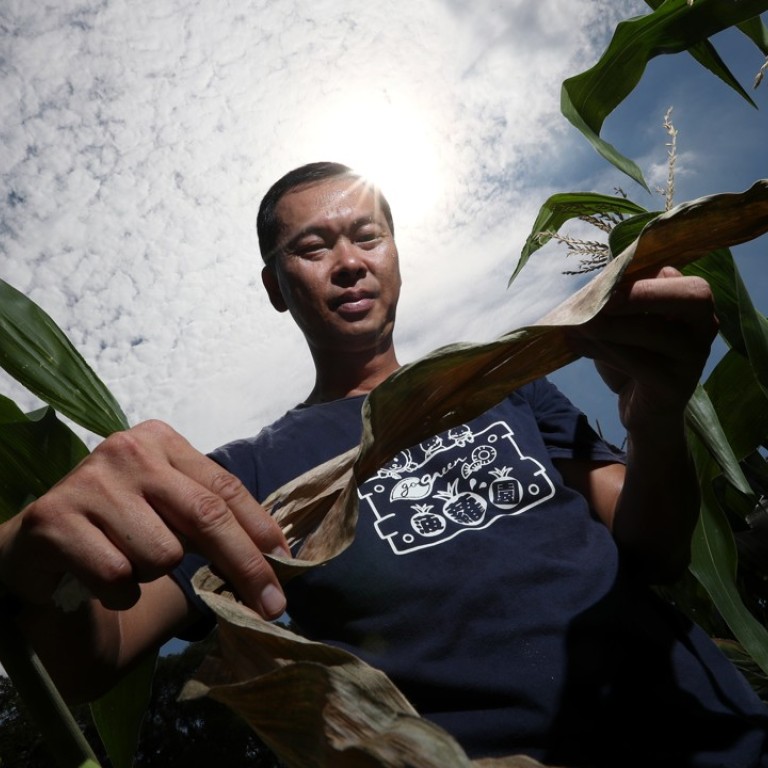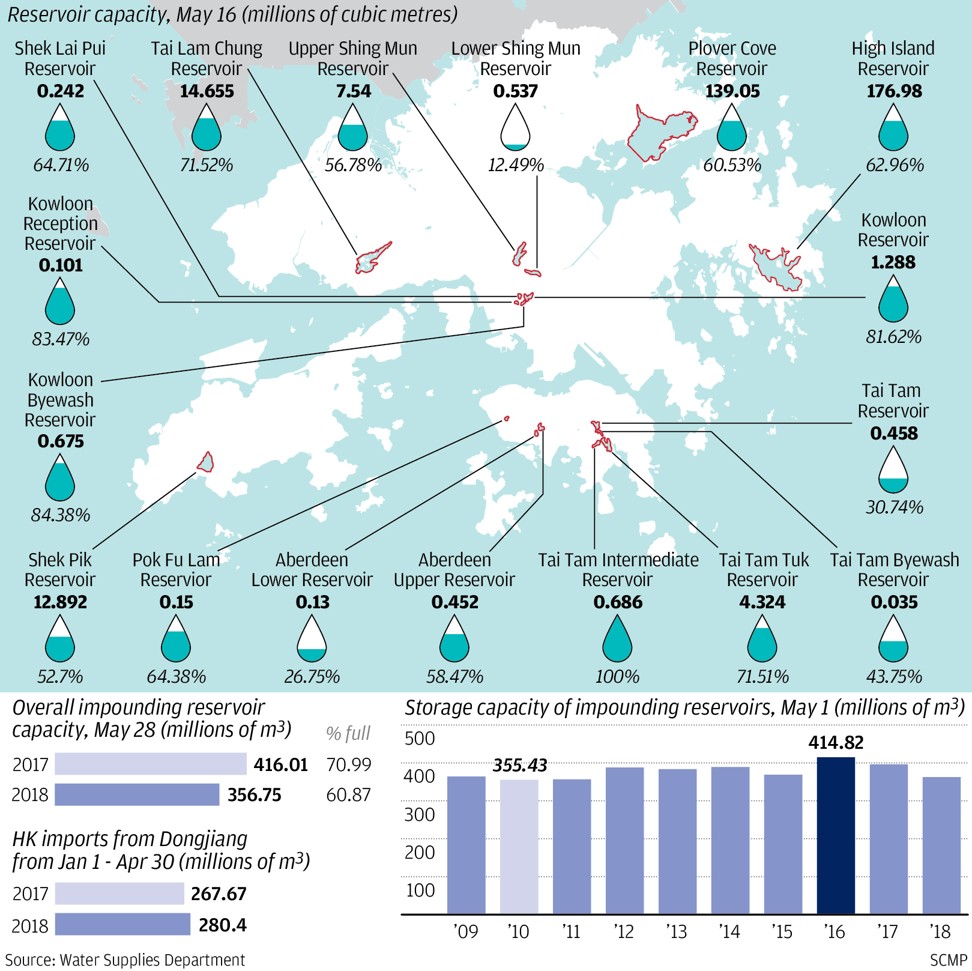
Drought in Hong Kong: city’s dry spell continues but experts say high temperatures and low reservoir levels don’t tell full story
High temperatures and low reservoir levels don’t tell full story about city’s water supply, experts say
Farm owner Raymond Cheng Wai-man never thought the day would come when he would yearn for a downpour.
Subtropical Hong Kong, after all, gets an average of 2,400mm of rain a year, about a tenth of which comes in May. But since January this year, less than 170mm has fallen on the city, under half the normal average for this period.
And for the first time since 1998, no rain signals were issued in the month of May.
Instead, Hong Kong has sweated through more than two weeks of consecutive “very hot” warnings, with daily maximum temperatures exceeding 33 degrees Celsius. Maximum temperature records have been broken almost daily over the past week.
In pictures: Hong Kong heatwave saps reservoirs
On Friday evening the Observatory finally took down its “very hot” weather warning after 15 days of the warning being in place.
“I’ve never quite experienced a May like this,” Cheng told the Post. A thermometer in one of his vegetable patches registered a reading of 40 degrees.
Cheng has lost 20 to 30 per cent of his crops to the record-breaking hot and dry spell. On his 1.4-hectare organic farm in Kam Tin, winter melon leaves have shrivelled and browned. Bell peppers are a fraction of the size they should be. Stalks of maize wilt in the unforgiving sun.
Some of his fields, irrigated just hours before, are already parched.
“It’s like a desert here – seeds aren’t germinating, everything’s growing much more slowly,” Cheung said.
The recent weather extremes have rekindled questions over Hong Kong’s water security and the future impact of climate change.
Dramatic images of bone dry reservoirs have sparked discussions of “drought” and the possible need for the city to revisit 1963-style water rationing.
The hottest day ever recorded for the month of May in Hong Kong was on May 31, 1963, with a temperature of 35.5 degrees. That year, the city suffered its worst drought, and the government was forced to ration water, supplying it to the public for only four hours every four days.

“It’s hard to guess if the drought of 1963 will come again, but the current situation is a reminder to us Hong Kong people that rain should not be taken for granted,” former Hong Kong Observatory director Lam Chiu-ying wrote in a blog post last month.
In one of the more extreme cases, Lau Shui Heung irrigation reservoir in Pat Sin Leng emptied out almost entirely from late April, exposing a bed of cracked mud. A visit to the catchment area by the Post this week found that water levels were down to a few tadpole puddles.
But Dr Frederick Lee Yok-shiu, executive director of the Centre for Water Technology and Policy at the University of Hong Kong, had doubts about what this meant for water security in the city.
“Irrigation reservoirs [for farming] are not really in use in Hong Kong any more. There is zero impact on our water supply,” he said.
Second-hottest day ever for month of May in Hong Kong
Few Hong Kong farms depend on irrigation reservoirs for water, drawing instead from rivers or wells. But with no rain for weeks, both reservoir yields and groundwater tables have been falling.
“What we should be concerned with is not irrigation reservoirs but our main impounding reservoirs – High Island, Plover Cove and Tai Lam Chung – which account for 90 per cent of Hong Kong’s storage capacity. If they are fine, there’s nothing to worry about.”
But Cheng, concerned for his fields, said: “Our wells are only a third of the level they are supposed to be. Because summer crops require a lot of water, we’re not able to irrigate as frequently. Who knows what level the water will be at tomorrow?”
According to the Water Supplies Department, the capacities of Hong Kong’s 17 impounding reservoirs are at 61 per cent, about 10 percentage points lower than during the same period last year.
High Island, Plover Cove and Tai Lam Chung are at 63 per cent, 60 per cent and 71 per cent respectively.
“At present, the total storage of water in Hong Kong reservoirs is lower than for the same period last year but is still within the normal level,” a spokesman said.
Local yields account for a small amount of the city’s freshwater consumption, as about 70 to 80 per cent of the city’s supply comes from the Dongjiang – or the East River – across the border in Guangdong. The water goes directly into the city’s supply, and any amount left over is stored at Plover Cove and High Island.
Hong Kong’s long-term water security, according to Lee, hinges less on local rainfall than on the storage levels of the three reservoirs in the Dongjiang water shed – Xinfengjiang, Fengshuba and Baipenzhu – which feeds into the city’s water supply.
“We tend to be quite inward-looking. We look at our security only in terms of our impounding reservoirs without realising that Hong Kong’s long-term water security will have to be looked at from a regional perspective,” he said.
Hong Kong must prepare itself for much worse than a heatwave
Dry months are not uncommon in southern China. The year 2011 saw average rainfall in Hong Kong during the first nine months at about 38 per cent below the norm – the lowest since 1963. The city had to increase its imports from the Dongjiang.
Professor David Chen Yongqin, a hydrologist at Chinese University’s Institute of Environment Energy and Sustainability, said climate change would make such erratic weather patterns more common.
With warmer temperatures, more water will evaporate from oceans into the atmosphere, meaning rain will come down more intensely while dry periods could be prolonged.
“The climate will become more variable and extreme … this will be a great challenge for water resources management.”


